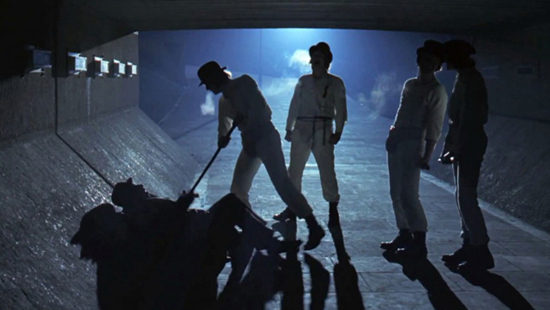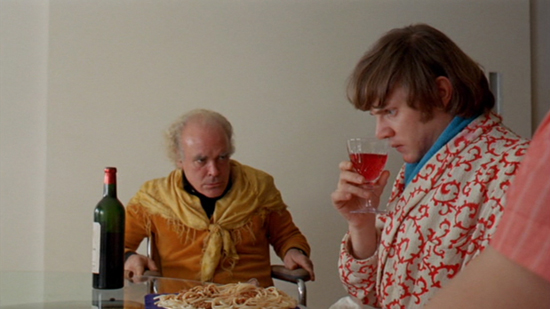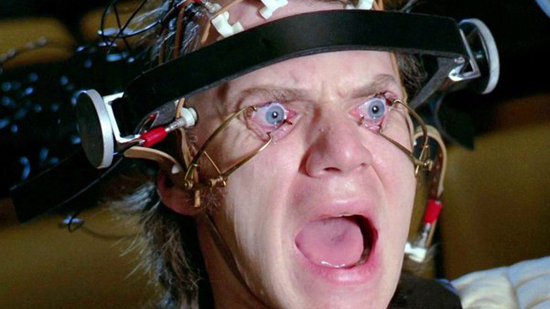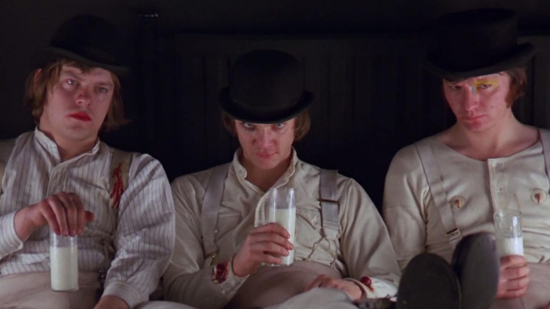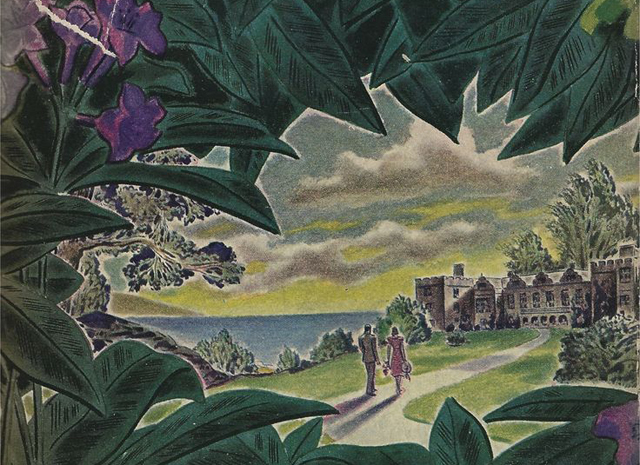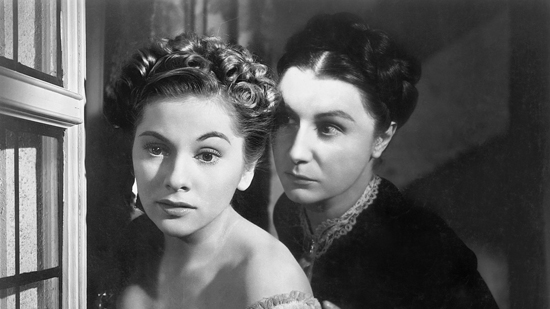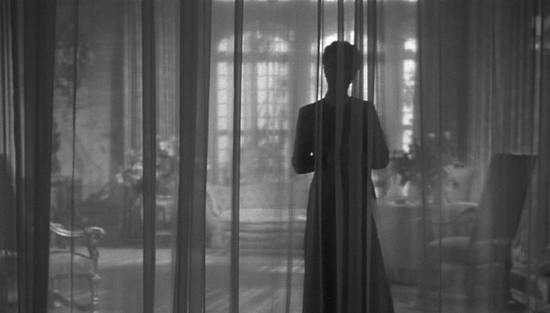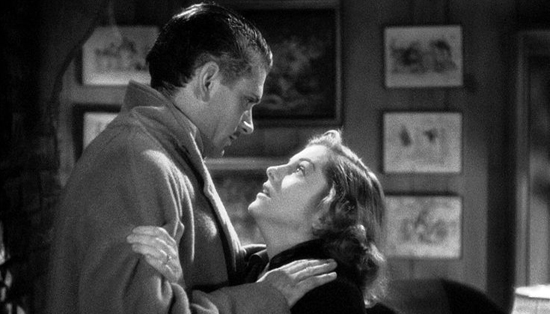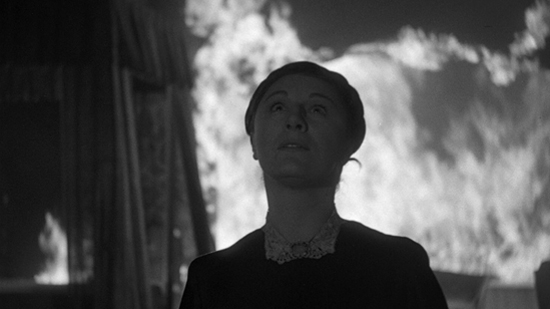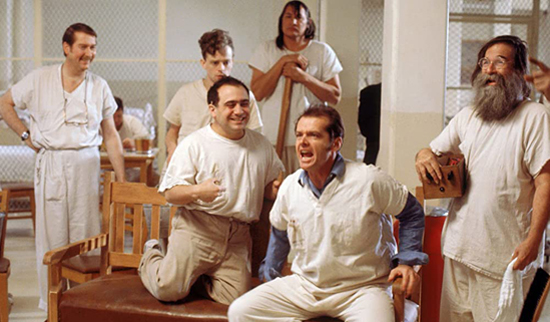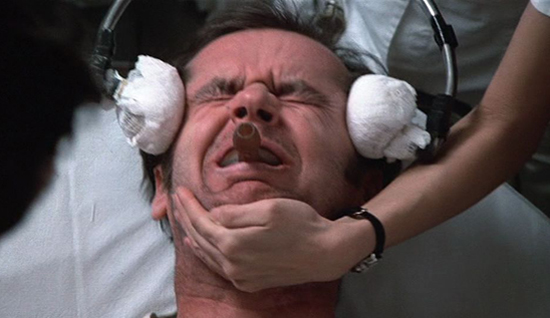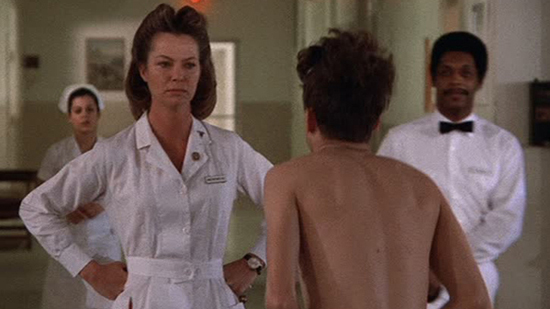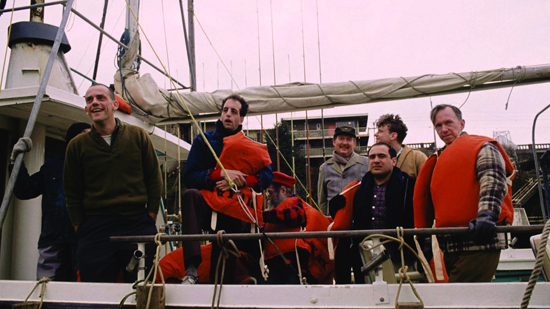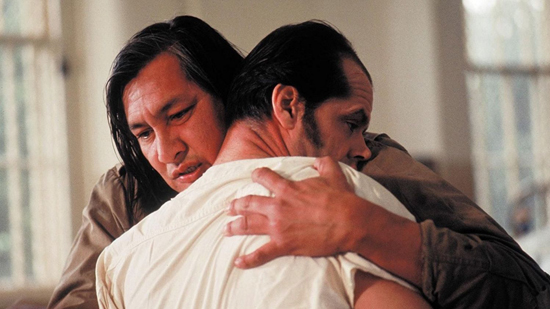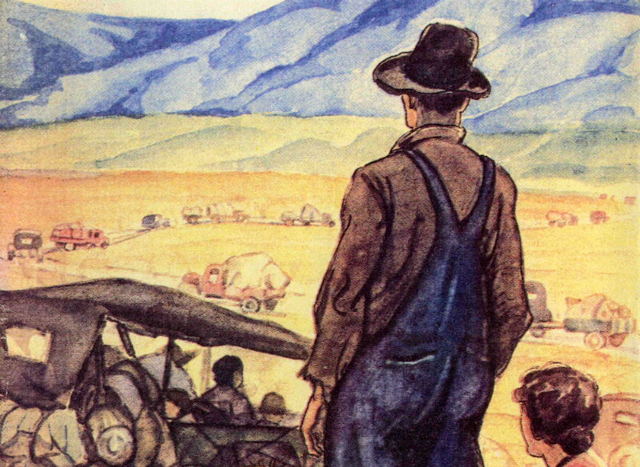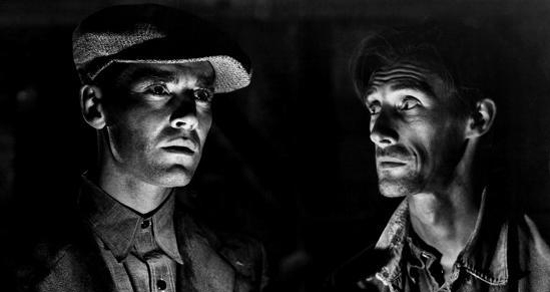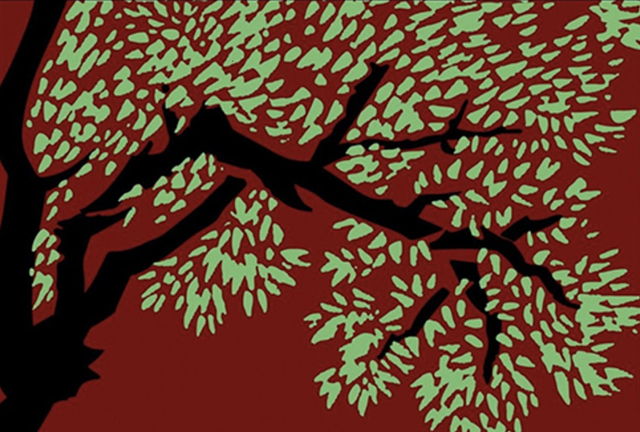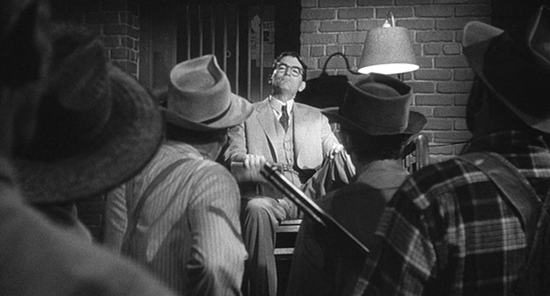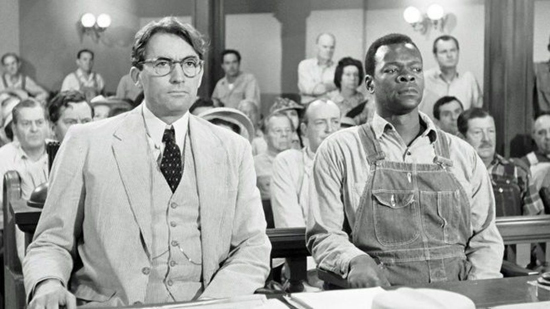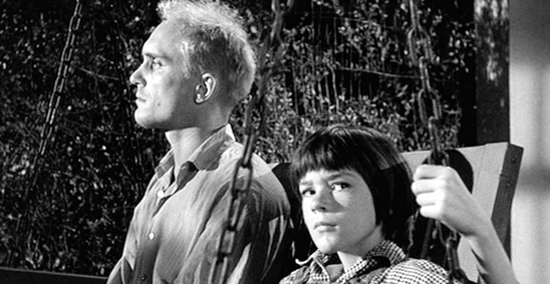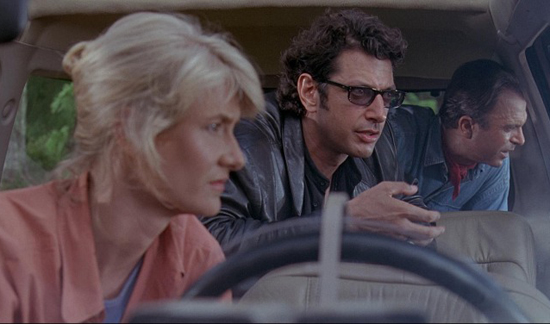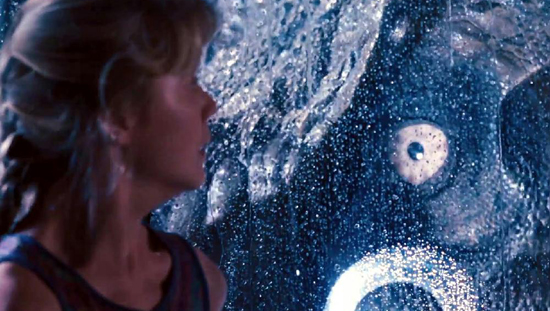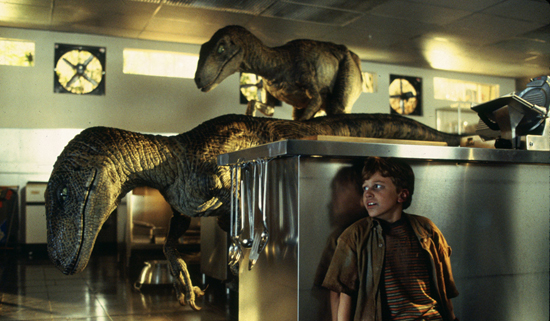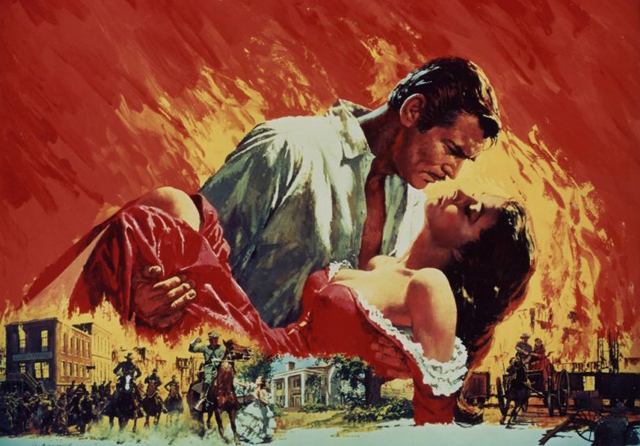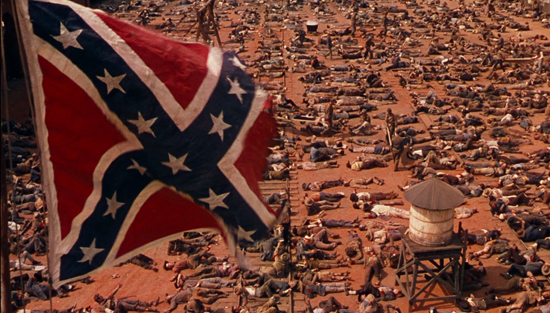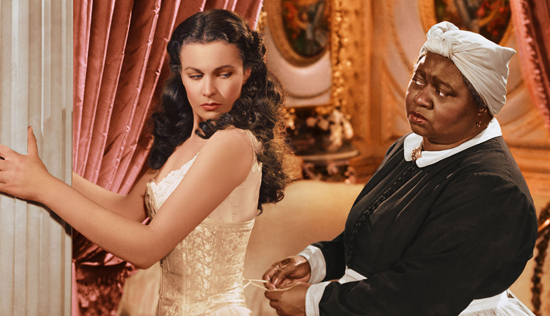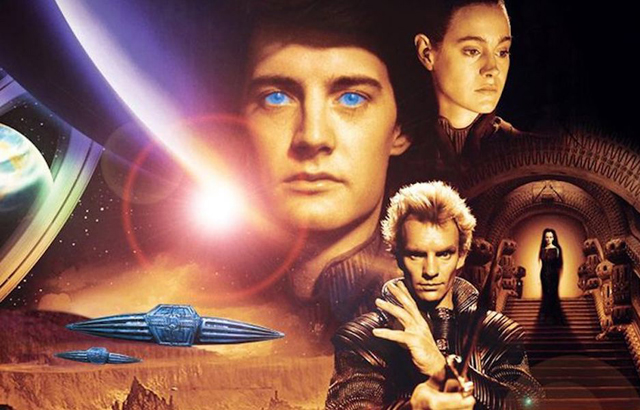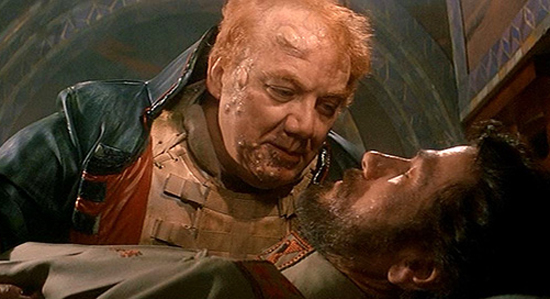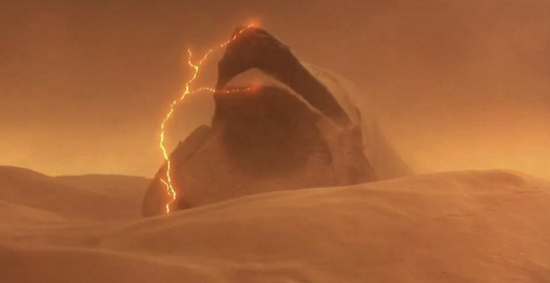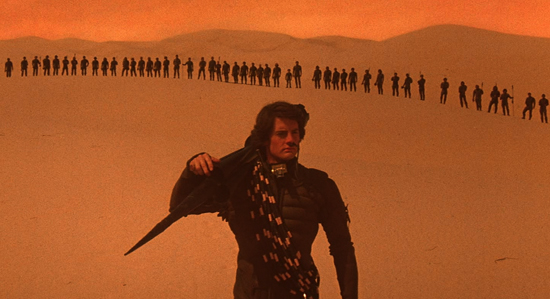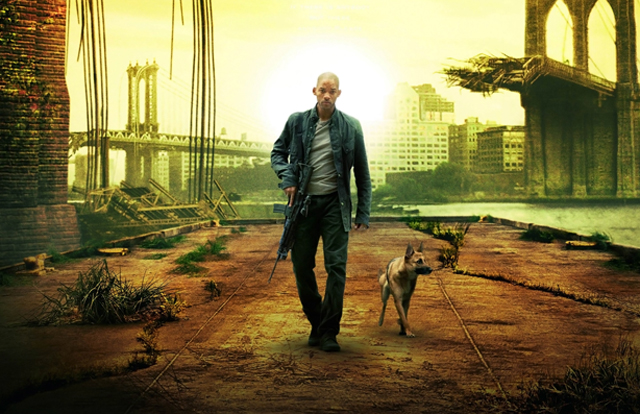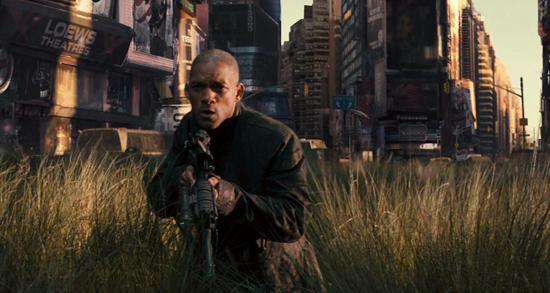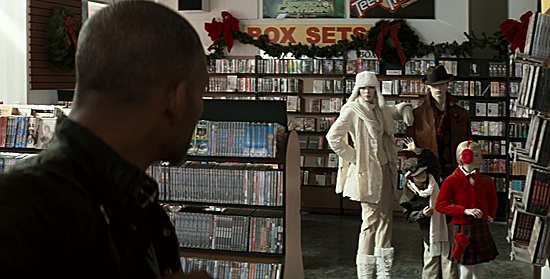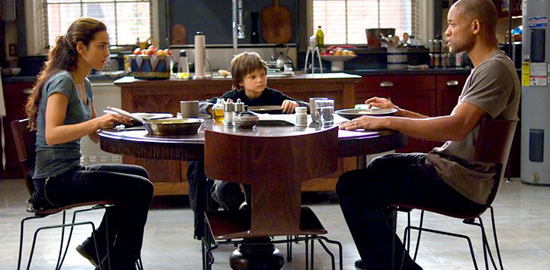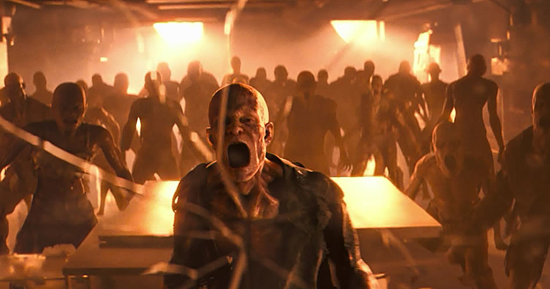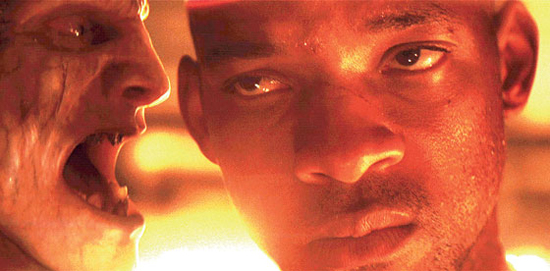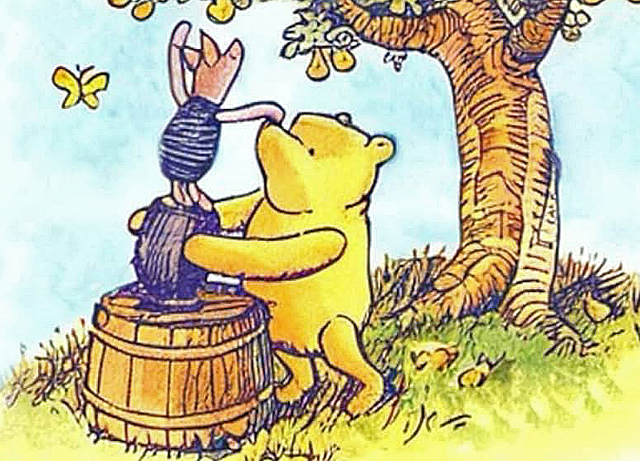
One of the strongest contributions that merry old England has contributed to world literature are the books that have been written specifically for younger readers. Popularized specifically in the turn of the 20th Century, children’s literature began to blossom and leave it’s mark on the publishing world, and many of the most well known authors were coming from the English literary community. What really distinguished English children’s literature were the memorable characters that came from these imaginative stories. Whether it be the maniacal Mr. Toad from Kenneth Graham’s The Wind in the Willows, or the boy who never grew up in J.M. Barrie’s Peter Pan, or the practically perfect nanny in P.L. Travers’ Mary Poppins, these were characters that lept off the page and captured the imagination of children not just in their native England, but all around the world as well. But the most popular of these characters may have come from the unlikeliest of authors. That character of course would be the little stuffed bear known as Winnie the Pooh. Pooh Bear is a character known the whole world over, rivaling even Mickey Mouse in overall awareness across cultures. But what is it about the character of Winnie the Pooh that has managed to transcend multiple generations and cultural barriers. In essence, there is a simplicity to the world of Winnie the Pooh that connects with our imagination at a very young age. As children, we see our own little worlds as being much grander than they really are, and out of that we develop an imagination where that small little world is the place for a great adventure of our making and the toys we play with are our companions. That’s at the core of the Winnie the Pooh stories, and it’s also where their creation began. Winnie the Pooh was born out of a real place and the imagination of a real child, which itself evolved into an interesting story on it’s own.
Alan Alexander (A.A.) Milne was a mildly successful playwright in England during the earlier part of the 20th Century. He served his country in World War I, and the experience left severe mental scars. His writing post-War became more harsh and bleak as he was passionate to express his anti-War feelings to the world. The toll of the war led him to retreat from the social life of London, and he spent much of the 20’s at a country estate near Ashdown Forest in East Essex. Most of these exile years were spent in the company of his young son, Christopher Robin Milne. Hoping to start fresh with his child that he neglected because of his seclusion due to triggering war flashbacks, the peaceful countryside allowed Milne to settle down and give more attention to his son. He observed how Christopher Robin would create his own adventures in the woods outside their home, and always with a stuffed bear at his side named Growler. This inspiring scene would spark the creativity in Milne’s mind once again and he began to write about Christopher Robin’s adventures in the 100 Acre Wood that was Ashdown Forest. And though Christopher Robin was indeed a part of his stories, the name of the bear needed to be more distinct than Growler. At the time, the London Zoo had just welcomed a Canadian bear cub with the name Winnipeg, or Winnie for short. And though the Milne had changed the name of his stuffed bear, Christopher Robin contributed the addition of Pooh to the name, as it was what he called a swan that lived in the nearby pond on the property. Christopher’s names for all of his other stuffed toys also made it into the story, including the tiny little Piglet, a tiger named Tigger, and a donkey named Eeyore. Over the course of two years, A.A. Milne wrote over two dozen Winnie the Pooh stories, and they were published collectively in two volumes, the titular Winnie the Pooh (1926) and The House on Pooh Corner (1928) soon after.
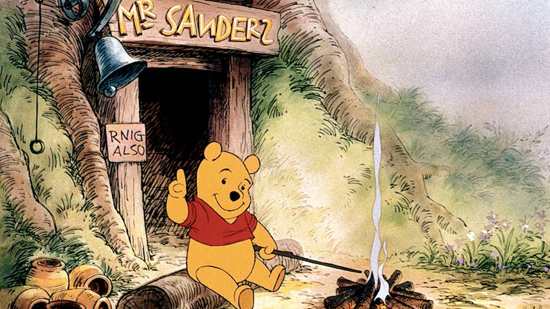
“Pooh, for a bear of very little brain, you sure are a smart one.”
The two Winnie the Pooh books were enormous hits all over England and they managed to make a huge impression across the pond as well in North America. The impact of that success unfortunately was not all that good for Milne and his family. One of the things that really captured the imagination of young readers were the many illustrations that were included in the books, taken from pencil sketches by Milne’s longtime collaborator and friend E.H. Shepard. Shepard’s depiction of Winnie the Pooh and his critter friends would become iconic and influential for years beyond, but when it came to drawing Christopher Robin himself, Shepard and Milne made the mistake of basing his likeness on the real Christopher. As a result, the very young boy became a bit of a celebrity, with many people clamoring to meet the real Christopher Robin. Christopher would go on a whirlwind tour helping to promote the book, with A.A. Milne unable to stop the frenzy surrounding his son. There was even a reckless marketing ploy where Christopher participated in a photo shoot with the bear Winnipeg at the London Zoo. That’s right, a barely 8 year old child was made to stand next to a live bear that could’ve easily attacked him without warning. Thankfully nothing happened, but it is shocking to think how poorly Christopher was treated during these promotional days. Naturally it led to some resentment in Christopher’s later years, as he grew to hate the bear that made him famous and thus denied him a simple childhood. A.A. Milne also resented the success of his Winnie the Pooh books because they overshadowed his other work and weren’t reflective of his true passions. Winnie the Pooh would be a sore spot in the Milne family for many years, as Christopher became more estranged from his father, whom he blamed for exploiting him. Towards the end of his life, A.A. Milne chose to distance himself from his most popular creation, refusing to have it dramatized in any form, both on screen and on the stage during his lifetime. Eventually he and Christopher did reconcile in later years, but they together chose to disown the cuddly little bear.
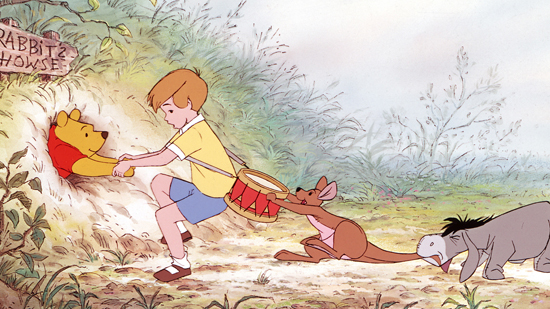
“The only reason for being a bee is to make honey. And the only reason for making honey is so I can eat it.”
After A.A. Milne’s death in 1956, the rights to his Winnie the Pooh stories were passed on to his publisher’s widow, as Christopher Robin Milne had no interest in claiming the character for himself. A couple years later, the widow of the publisher would put up the rights for a film version for the first time ever. There of course was one filmmaker who had his eyes set on the Winnie the Pooh stories for a long time and jumped immediately at the opportunity. That person of course was Walt Disney. Disney gained the exclusive rights to the Winnie the Pooh stories in 1961, and he was intent on putting his own spin on the world renowned stories. But, instead of crafting a full length feature based on the books, Walt opted to make short subject adaptations of select chapters of the Winnie the Pooh books. Given that the Winnie the Pooh books are just a collection of self contained short stories, it made more sense to have a series of shorts made rather than a singular film with a feature length narrative. And so, Walt Disney and his animators would begin their work on Winnie the Pooh with an adaptation of the first two chapters of the original 1926 book; one with a story of Pooh using a balloon to fly up into a tree in order to reach the honey found in a bee hive and other involving Pooh getting stuck in the entrance hole of the bunny hollow of his friend Rabbit. This first short would be called Winnie the Pooh and the Honey Tree (1966), which sadly would end up being the last animated project that Walt Disney would see to completion. After his death in 1966, Walt’s animation team began work on the second featurette, entitled Winnie the Pooh and the Blustery Day (1968), which among other things introduced the character of Tigger into the series. Blustery Day would prove to be even more popular than the first short, and it ended up winning an Oscar as well for Animated Short. A few years later, the third short Winnie the Pooh and Tigger Too (1974) was released. The three shorts were then combined into a package feature film called The Many Adventures of Winnie the Pooh (1977) with new animated interstitials and a finale added. This package feature is how most people are able to view the original run of Disney’s take on Winnie the Pooh, but it’s not the last we would ever see of the little bear. Indeed, Winnie the Pooh would be around for quite a while, appearing in Saturday morning cartoons, holiday specials, and he would even get another animated feature film from Disney in 2011, simply titled Winnie the Pooh. Not to mention, he would become a gold mine in merchandising for Disney, making billions of dollars for the company. Remarkably, what A.A. Milne chose to cast aside, Disney would embrace and make their own, and it would be one of the most lucrative acquisitions they have ever made.
Though for fans of the original books, it’s that Disneyfication of the character that has become controversial over the years. Many people in the UK are especially resentful of how Americanized the Disney version of Winnie the Pooh is. The Disney shorts very much lack the English identity that is so crucially part of Milne’s writing. A.A. Milne was a poet first and foremost, and his Winnie the Pooh stories were full of the kind of flourish that he excelled at as a writer. Some of the moral lessons learned by Pooh and Christopher Robin show how Milne himself was trying to process his own outlook on life, with Pooh acting as both a companion to Christopher as well a bit of a therapist. Much of that flourish is minimized in Disney’s versions, as Winnie the Pooh and his friends speak more or less like other American cartoon characters of the time. Even though the characters themselves may be missing some of that distinct Milne dialogue in favor of a more straightforward American style sense of humor, Walt Disney and his team still found a clever way to work some of Milne’s style of prose through the inclusion of a narrator. Voiced in the original run of shorts by English actor Sabastian Cabot, the narrator plays an important function within the adaptation. He not only brings Milne’s own voice into the film, but he even interacts with the characters as well. One of the more inspired choices of the Disney adaptation is to have the characters actually interacting within the pages of the book itself, including treating the text as actual physical objects. They’ll even address the narrator directly, aware of his existence. It’s an interesting aspect that Disney added and it helps to both pay homage to the original text while at the same time allowing for creative flourish on the part of the animation itself.
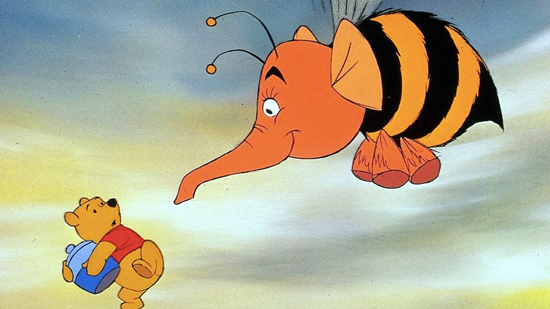
“Heffalumps and Woozels are very confusal. A Heffalump or Woozel’s very sly. If honey’s what you covet, you’ll find that they love it. Before your eyes you’ll see them multiply.”
Even with the changes Disney made, the shorts still maintains a reverence for the source material. It is clear that the Shepard illustrations were key inspirations for the visual style of the 100 Acre Wood. Disney Animation was going through a transitional period in the mid to late 60’s, as they embraced a newer, sketchy style look thanks to a Xerox process that translated pencil drawings directly onto animation cels. It worked well on some projects, like the more modern day 101 Dalmatians (1961), but looked a little too course on films that should have had a softer, classical look like The Aristocats (1970). For Winnie the Pooh, the Xerox process was a perfect match, because of it’s similarity to the Shepard illustrations. The backgrounds in particular really feel like they were pulled right off the page, and given the short’s gimmick with the living manuscript that the characters interact with, it’s clear that Disney really wanted to capture that simple beauty found in the original texts. The character designs take heavy inspiration from the Shepard drawings too, though with noticeable differences to help make them easier to animate. Disney’s Winnie the Pooh is a bit more rotund than his book counterpart, though Disney still keeps the shape of his bear head very similar to how it is in the book. Piglet is almost a direct translation, while other characters are embellished a bit more. Tigger is especially more dynamic in the Disney version, being both animalistic, but also capable of human like behavior. Disney’s choices in voices also go a long way towards making the characters come alive. Veteran actor Sterling Holloway, a favorite of Walt’s, was brought on to give Winnie the Pooh his voice, and it’s a perfect match. While literary purists may bemoan Holloway’s American accent on this very British bear, there’s no denying the soft tone on his voice is delightful to listen to and feel natural for a stuffed bear named Winnie. Ventriloquist and comedian Paul Winchell delivers a rousing performance as Tigger, especially in developing the distinctive laugh of the character with his “hoo hoo hoo hooo.” Character actor John Fiedler brought his distinct high pitched voice to the part of Piglet, and he would continue to voice the character for another 40 years up until his passing in 2005. One key change that the Milne family probably would’ve approved of are the changes to Christopher Robin. In addition to also giving the character an American accent (provided by a number of young actors), they also changed the look of the character to help distance him more for the real Christopher Robin. His function in the story is also less direct, with him passively being a part of stories that Winnie the Pooh is more independently motivated in.
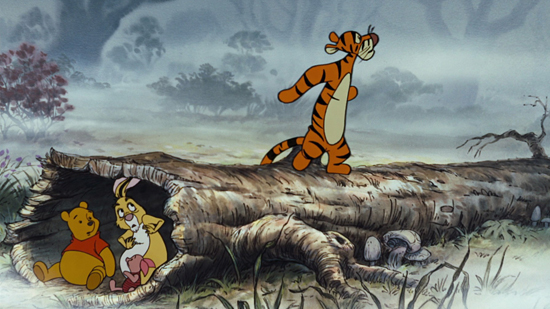
“Wherever they go, and whatever happens to them on the way, in the enchanted place on top of the forest, a little bear will always be waiting.”
Though Disney made several changes to the characters, they still remarkably remain faithful to the stories themselves. All of the shorts that made up The Many Adventures of Winnie the Pooh were adapted from Milne’s own stories. The stories themselves get mashed together to create bigger narratives, but each one translates original ideas from Milne’s own imagination. Disney clearly knew that many in the audience would’ve been familiar with these stories, especially the iconic Honey Tree and Flood stories. Where Disney saw their chance to bring their own flourish was in expanding upon concepts that are limited when described on the page. One of the biggest moments that Disney contributed to Winnie the Pooh is found midway through the Blustery Day short. In it, Winnie the Pooh learns about the concept of Heffalumps and Woozels from Tigger, fearing that they will steal his honey. This leads to a nightmare sequence when Disney creates some truly surrealistic imagery. I would make a guess that this was the segment that helped the short win an Oscar because it is a one of the most tripiest moments found in any Disney movie. The “Pink Elephants” sequence from Dumbo (1941) seems to have been an inspiration, with Winnie the Pooh finding himself caught up in a weird place surrounded by Heffalumps and Woozels that shapeshift into anything. It’s definitely the thing that deviates the most from Milne’s original vision, which is far more grounded in a magical reality. Apart from that detour, which makes sense in the scheme of the story as part of Winnie the Pooh’s nightmare, the stories play out just as Milne wrote them. The stakes never grow too dire; the only real conflict overall in the arc of these stories is the contention between Rabbit and Tigger, which the characters are too good natured to ever take too seriously. Disney showed with the Heffalump sequence that they were capable of deviating far from Milne’s vision, but they wisely kept Winnie the Pooh characteristically simple and direct in line with how the books told their stories.
As Winnie the Pooh inches closer to his Centennial anniversary, it is remarkable to see how his influence has not waned but instead grown stronger. After the character entered the public domain a couple years ago, it didn’t take long for opportunistic filmmakers to exploit that freedom and use the iconography of Winnie the Pooh as the basis for a horror movie. Thankfully, Winnie the Pooh: Blood and Honey (2023) came and went and was widely panned by everyone, so it’s existence shouldn’t cast a bad rep on the character going forward. What has been one of the stranger legacies of the character, however, has been his influence on global politics. At some point, many people pointed out the visual similarities between the Disney design of the character and Chinese Communist Party leader Xi Jingping. President Xi has been aware of this, as the comparison to Winnie the Pooh is often used as a way of mocking the controversial leader, so what has come as a result has been a crackdown on all Winnie the Pooh related imagery all across China. The only exceptions allowed are select pieces of merchandise, as well as costumed appearances at Shanghai Disneyland. Other than that, no one in China is allowed to distribute anything not approved by the Chinese government with Winnie the Pooh on it. Now Winnie the Pooh has been turned as a symbol of rebellion in China, which I don’t know how an anti-Fascist pacifist like A.A. Milne would feel in response. As of now, the Disney version of the character remains the face of the character that most of us know today, and Disney is not likely to be slowing down with their presentations of the character. He is now as big of a driver of the Disney brand as Mickey himself, with Pooh being especially popular with the youngest part of Disney’s audience. Has it taken away from some of the appeal of the character that Milne first imagined. The original shorts did an admirable job of staying true to their literary source, but in the years since, with Disney going way beyond the books with countless spin offs on television and home video, it can be argued that Disney has been a little overkill with their hold on the property. Still, Winnie the Pooh remains more or less the same honey loving bear we all love, and like his original literary companion Christopher Robin, he has been a guiding role model for kindness in much of our childhood memories. If Winnie the Pooh’s legacy in the end is to encourage a lot more kindness in the world, than perhaps A.A. Milne was able to fulfill his intent for seeking a more peaceful world after all.

“The most wonderful thing about Tiggers is that I’m the only one.”

